Are you interested in learning how to start a personal finance blog and make money online? If so, you’ve come to the right place.
In this post, we’ll teach you everything you need to know about starting a personal finance blog and monetizing it.
We’ll also provide some helpful tips on growing your audience and creating great content.
So, if you’re ready to learn, keep reading!
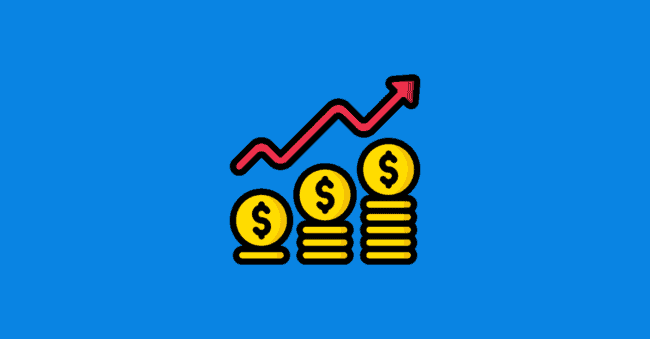
How to Start a Personal Finance Blog in 7 Steps
- Define Your Personal Finance Blogging Goals
- Choose a Personal Finance Niche
- Pick & Register a Blog Domain Name
- Setup WordPress
- Write & Publish Blog Posts
- Promote Your Personal Finance Blog
- Monetize & Make Money
1. Define Your Personal Finance Blogging Goals
The first step to start a successful personal finance blog is to define your goals.
Why do you want to start a personal finance blog? What are your blogging goals?
- Are you looking to make money online? If so, how much money do you want to make?
- Are you looking to grow your audience? If so, how many readers do you want to attract?
- Are you looking to build your personal brand? If so, how do you want to be perceived by your audience?
Answering these questions will help you determine what kind of content to create, how often to publish, and how to promote your blog.
What is a Personal Finance Blog?
A personal finance blog is a website with insights on money matters that are designed to help people make better financial decisions. The blog can include topics like budgeting, saving money, investing, retirement planning, and more.
Why Start a Personal Finance Blog?
There are many reasons why you might want to start a personal finance blog.
Some people start blogs to make money online, while others do it to build their personal brand or grow their audience.
Whatever your reason for starting a blog, know that it is possible to achieve your goals. With hard work and dedication, you can make money blogging about personal finance.
The benefits of starting a personal finance blog include:
- Become a personal finance influencer
- Make money blogging
- Build an engaged audience
- Help people make better financial decisions
How much money can you make from personal finance blogging?
You can make $15-$25 for every 1000 ad views on your personal finance blog. An SEO optimized blog post can get anywhere between 300 to 1000 visits per month. So, a personal finance blog with 100 blog posts can make as high as $2500 every month. You can make even more money if you monetize with affiliate marketing and digital products.
2. Choose a Personal Finance Niche
The next step is to choose a personal finance niche.
A niche is a specific topic or area of interest that you’ll write about on your blog.
For example, some personal finance bloggers write about budgeting, while others write about investing or retirement planning.
Why choose a niche?
When you choose a niche, you can become an expert in that topic. This will help you attract a loyal following of readers who are interested in what you have to say.
It’s also easier to monetize a blog when you have a niche audience. Advertisers and brands are more likely to work with you if they know that your audience is interested in your products or services.
Finding Your Ideal Niche
If you’re having trouble finding a personal finance niche, ask yourself the following questions:
- What personal finance topics are you passionate about?
- What do you want to learn more about?
- What can you teach other people?
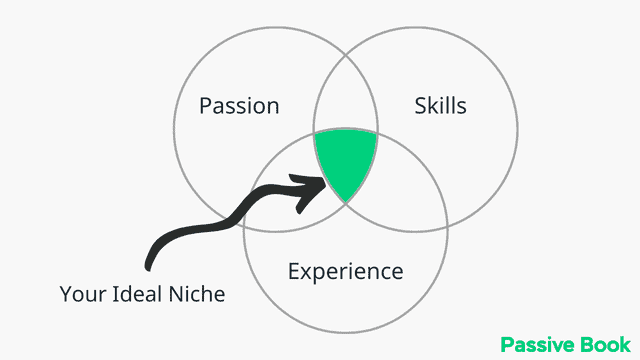
Answering these questions will help you zero in on a niche that you’re passionate about.
Here are a few personal finance niches to help you find yours:
- Debt Management
- Investing
- Retirement Planning
- Crypto Currency
- Real Estate
- Business Financing
- Budgeting
- Paying off Student Loans
- Tax Planning
- Saving Money
Brainstorm a few niche ideas that you are interested in.
Examples of Personal Finance Blogs
Here are 5 examples of popular personal finance blogs:
[auto-list-number] Get Rich Slowly
The blog focuses on financial independence and early retirement. Topics also include mindset and self-improvement.

[auto-list-number] Financial Samurai
Started by Sam Dogen who worked in finance, the blog writes articles loved by the FIRE community (Financial Independence Retire Early).

[auto-list-number] Money Crashers
The blog focuses on personal finance with an emphasis on credit cards. You will find the best credit card deals and in-depth reviews of different credit cards.
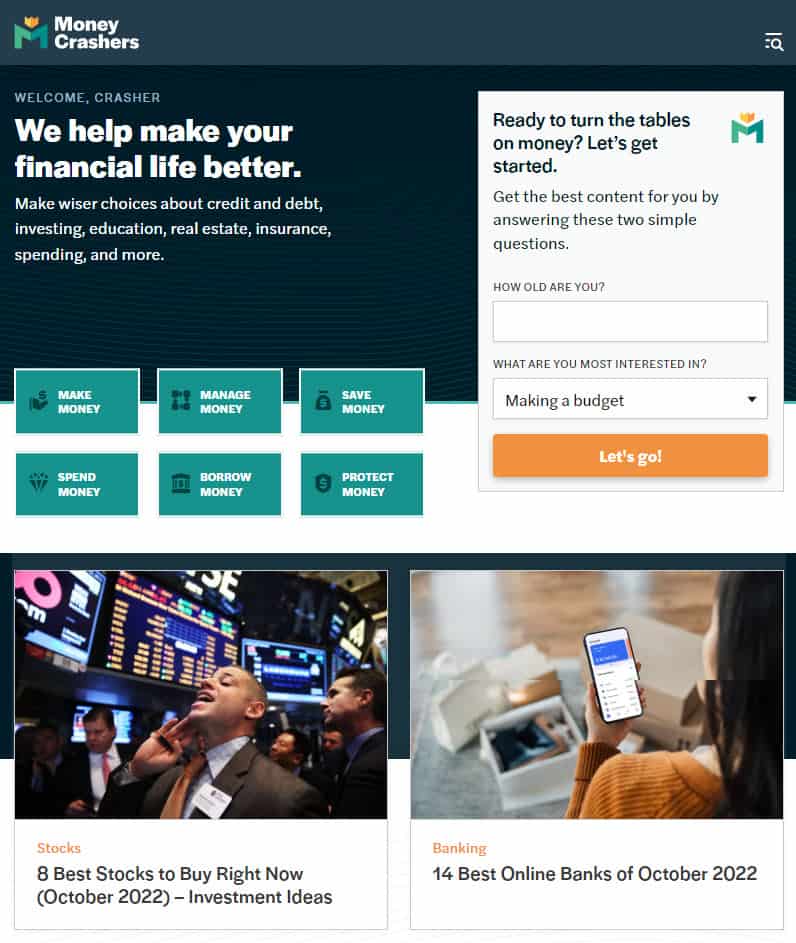
[auto-list-number] Mr. Money Mustache
Focuses on financial independence and early retirement with an emphasis on frugality and simple living.
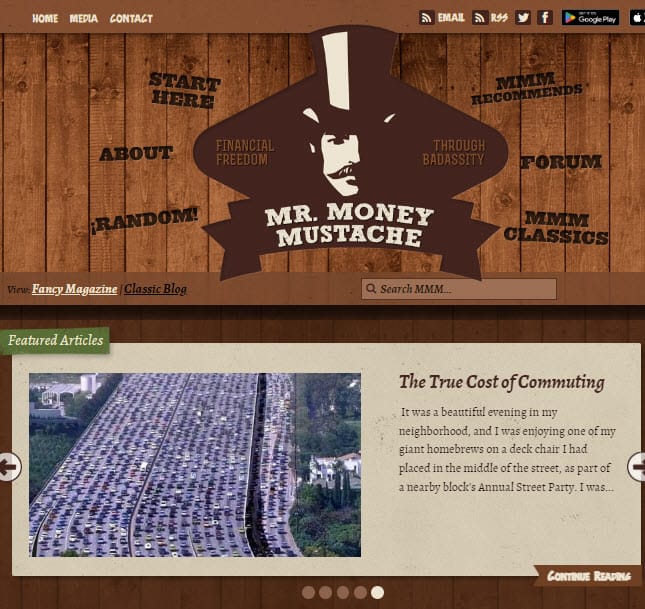
3. Pick & Register a Blog Domain Name
Once you have chosen your niche, it is time to brainstorm a few names for your personal finance blog.
We recommend you keep your personal finance blog’s name to two words (Example: Financial Samurai). One of the two words should be a keyword from your niche. The other word can be something that makes your website brandable. For example, our blog teaches people how to make passive income, so we have named it Passive Book.
Here are some of the words that you can mix and match into your blog name:
- Money
- Financial
- Finance
- Penny
- Dollar
- Balance
- Rich
- Debt
- Wallet
- Coin
- Invest
- Investing
- Budget
Use a Business Name Generator to brainstorm the name of your blog.
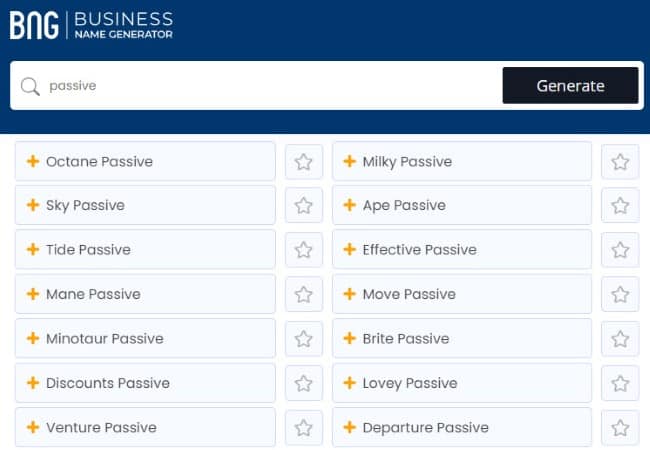
You can also use your own name for your blog. But if you ever plan to sell your website in the future, it is much more difficult to transfer your brand to the buyer when it is your name.
Check Domain Name Availability
After you have brainstormed a few names for your personal finance blog, you should check if the .com domain name is available.
Your domain name is your blog’s address on the internet. It’s how people will find your blog when they’re searching for information on the web. Almost always it is your blog name followed by .com.
You must check if both the .com domain name and the social media handles are available. You can use Namechk to check the availability of both your domain name and social media handles.
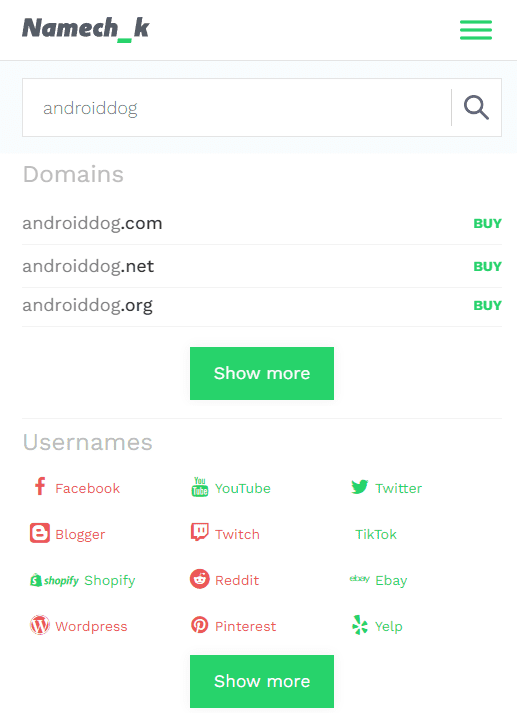
Here are a few things to keep in mind when selecting a domain name:
- Choose a .com domain name. 86% of the internet uses .com, so your visitors are likely to try visiting your blog by typing .com. Avoid other extensions like .net or .org.
- Don’t include hyphens and numbers.
- Do not use words with multiple spellings (for example colour vs color).
- Shorter domain names are better. Try to keep it under 12 characters.
- Spelling & Pronunciation should be easy and intuitive.
- It should be easy to remember.
- Avoid words that can be misread together. For example, therapistjohn.com can be read as Therapist John or The Rapist John.
- Make sure it’s not trademarked or copyrighted by someone else. The AI writing software Jarvis.ai had to rebrand to Jasper.ai because Marvel sued them for the Iron Man reference. Lawsuits will happen once your blog is established.
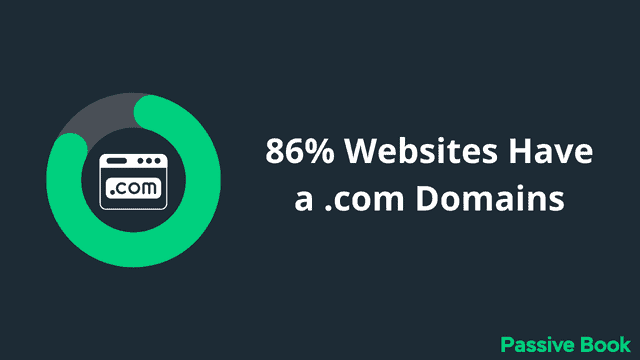
Register a Domain Name
Once you decide your domain name it is time to register it.
You should register your domain with NameCheap because you will get domain privacy for free. Other providers charge $12 per year for domain privacy. Without domain privacy, your name, home & email address will be accessible to the public.
Step 1: Go to NameCheap. Enter your domain name with the .com extension.
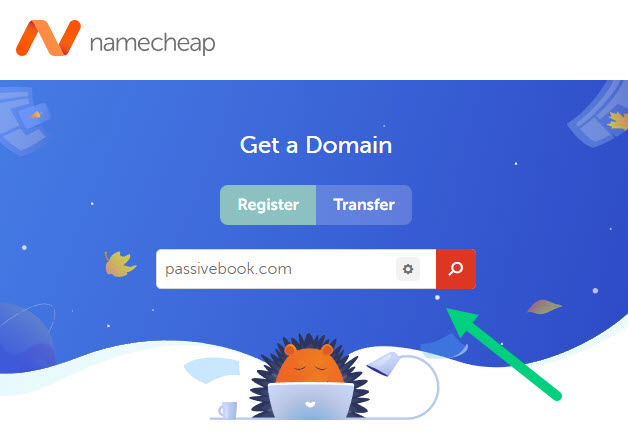
Step 2: Select the .com extension and click the Add to Cart button.
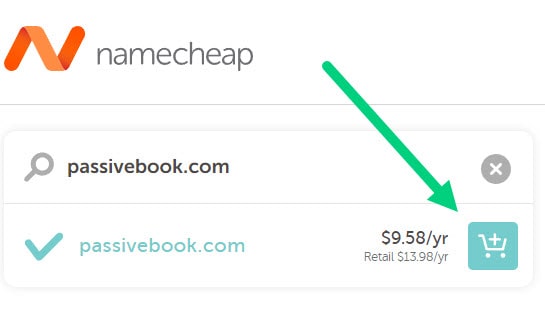
Step 3: After adding the domain to the cart, click on the Checkout button.
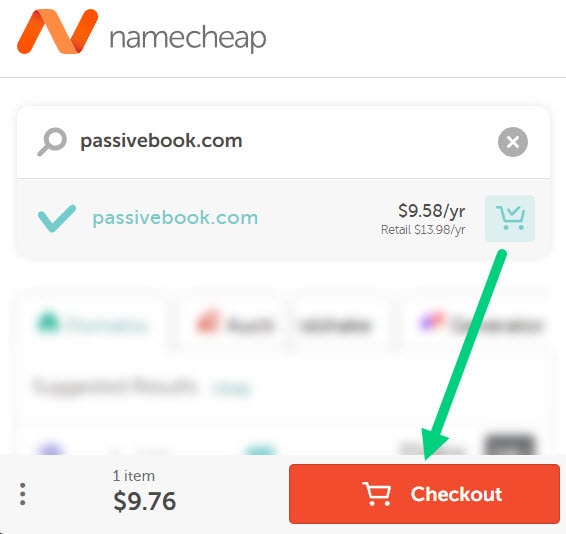
Step 4: Enable Domain Privacy that comes for free along with auto-renew. You don’t need any other paid addon.
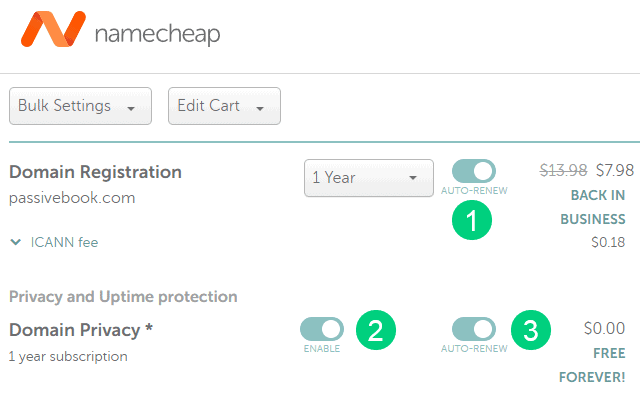
Step 5: Click on Confirm Order. Pay to complete your purchase.

Step 6: Log in to Namecheap and click on Domain List ❶ in the left sidebar and then click Manage ❷ next to the domain you just purchased.
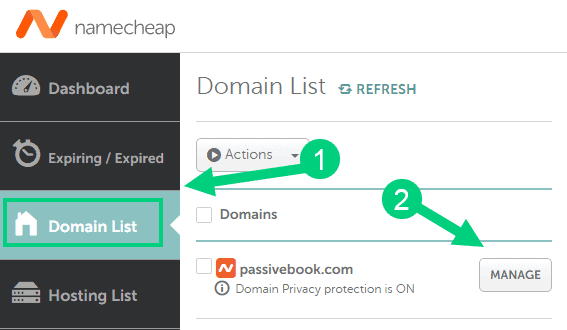
Step 7: Under the Nameservers section, select “Custom DNS” from the dropdown ❶. Then enter the following two nameservers ❷ ns1.bluehost.com and ns2.bluehost.com as shown in the image. Then click the green tick ❸ to save. If you use a hosting provider other than Bluehost, enter their nameserver values in this step instead.
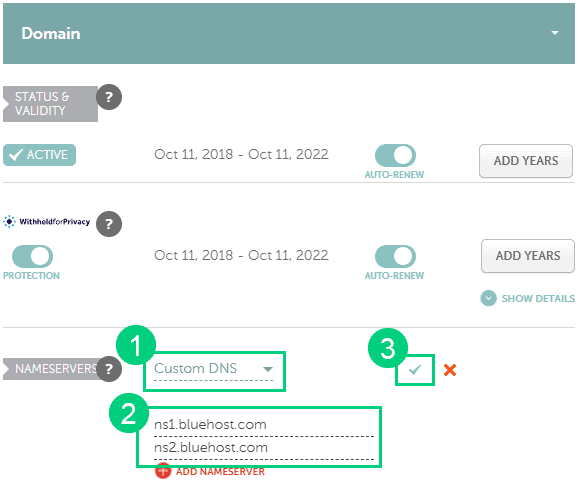
Can I get a free domain name?
Your web hosting provider might give you a free domain name for one year but they charge $12 for domain privacy which is free in Namecheap. From the second year, you will pay for both the domain and privacy which will cost you more than $20+. So it is cheaper to just register your domain with Namecheap from the beginning. Also using different companies for web hosting and domain registration will allow you to easily switch your blog host later without transferring domains.
Can I change the name of my blog later?
You will lose your search engine rankings if you change your blog’s name once it gets links from other websites. It will take as long as a year or more for you to regain the lost traffic. It is possible to mitigate problems by having proper redirects. But you will have to renew both your old and new domains every year. So try to avoid changing your blog’s name once it is established.
4. Setup WordPress
The next step is to get your blog up and running in WordPress. WordPress is a content management system (CMS) that allows you to easily create and manage your blog content.
Why Choose WordPress.org?
There are many blogging platforms but the self-hosted wordpress.org powers 70% of blogs on the internet. 42% of all websites on the internet use WordPress.

WordPress is free open-source software that you can install on your own web server.
You will have full ownership of your blog and can do whatever you want with it. For example, you can monetize your blog in any way you want. You will not be limited by the rules of a third-party platform.
WordPress is very user-friendly and easy to use. Even if you are not tech-savvy, you can still create a beautiful website with WordPress.
There are thousands of themes and plugins available for WordPress which allows you to customize your website to match your brand.
WordPress is SEO friendly which means your blog will have a better chance of ranking high in Google search results.
WordPress.org vs WordPress.com
There are two versions of WordPress: WordPress.com and WordPress.org.
WordPress.com is a platform where you can create a free blog but you need to pay $15 or more to get all the features. WordPress.org is where you can download free open-source software to install on your own web server.
You should always choose WordPress.org over WordPress.com for the following reasons:
- WordPress.com is very limited in how you can customize your blog. For example, you can not install your own themes or plugins.
- WordPress.com makes it very difficult to monetize your blog. They only allow a limited number of ways to make money from your blog and they take a cut of the revenue.
- WordPress.org on the other hand gives you full ownership of your blog. You can customize it however you want and monetize it in any way you want.
- WordPress.org is also more SEO friendly which means your blog will have a better chance of ranking high in Google search results.
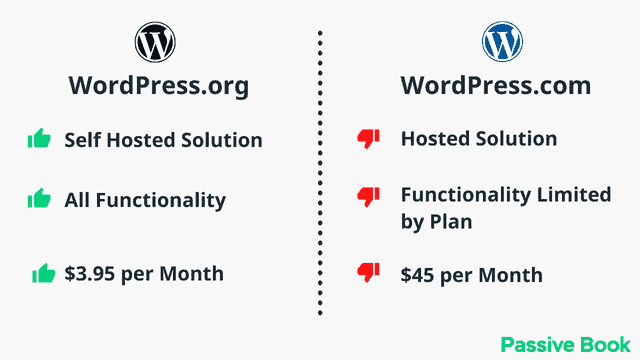
We recommend using WordPress.org because it gives you more control over your blog and how you monetize it.
Why Avoid Free Blogging Platforms
There are many free blogging platforms such as Blogger, Tumblr, and WordPress.com. While these platforms are easy to use, they have many drawbacks.
The biggest problem with free platforms is that you do not own your content. The platform can delete your blog at any time without warning. For example, Tumblr has been known to delete blogs that violate their Terms of Service.

Another problem with free platforms is that they make it very difficult to monetize your blog. For example, Wix only allows a limited number of ways to make money from a free blog.
Finally, free platforms are not as SEO friendly as self-hosted WordPress.org. This means your blog will have a harder time ranking high in Google search results.
For all these reasons, we recommend avoiding free blogging platforms and using WordPress.org instead.
How much does it cost to start a personal finance blog?
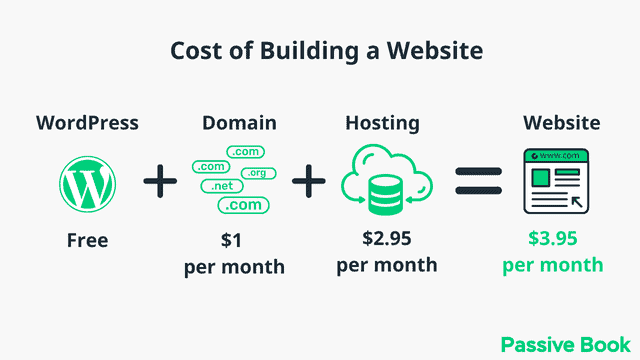
It will cost you $2.95 per month to host your WordPress personal finance blog in Bluehost. A domain will cost you $12/year. So that is a total of $4.2 per month, which is less than the price of Netflix for all the unlimited features that a self-hosted WordPress blog has to offer.
What to do if you already have a free blog?
Migrating to WordPress is very easy. You can use a free plugin to migrate your content from your old blog to WordPress. The plugin will automatically import all your posts, pages, comments, and images.
Install WordPress in Hosting
You need web hosting to install WordPress. Web hosting is a server that stores all your blog posts, files, and images. When someone visits your blog from a browser like Chrome or Firefox, your web host takes the files from your server and loads them into your visitor’s browser.
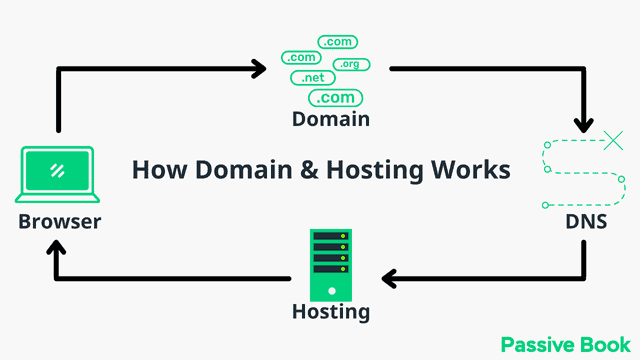
For this guide, we will use BlueHost as our web host. It is a cheap hosting that is extremely easy for beginners to set up. If you use any other web host, the steps will be the same but the user interface may be slightly different.
1. Go to BlueHost using this link to get a special discount. Select WordPress > WordPress Hosting from the top menu.
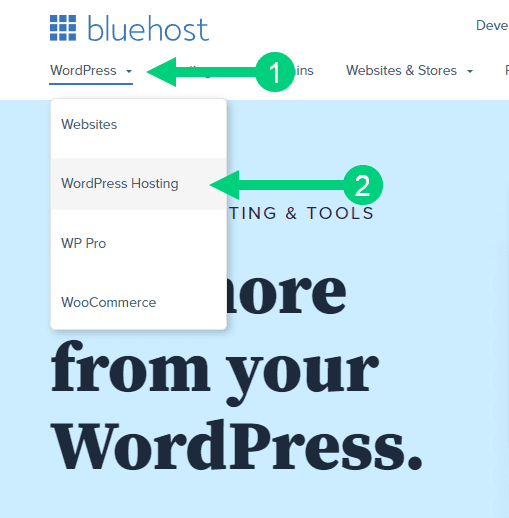
2. Click on the button you see on this page and you will be taken to the pricing section.
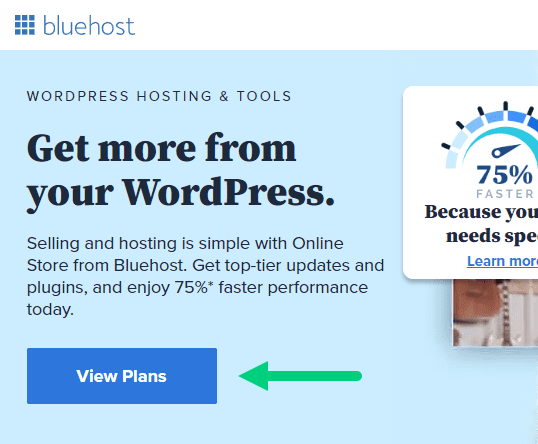
3. Select the Basic Plan. You can upgrade to a different hosting plan as you grow.

4. If you already have a domain name that you purchased with Namecheap you can put that in the “Use a domain you own” ❶ section. If you don’t have a domain name yet, choose the “Create a New Domain” ❷ to purchase a new domain.
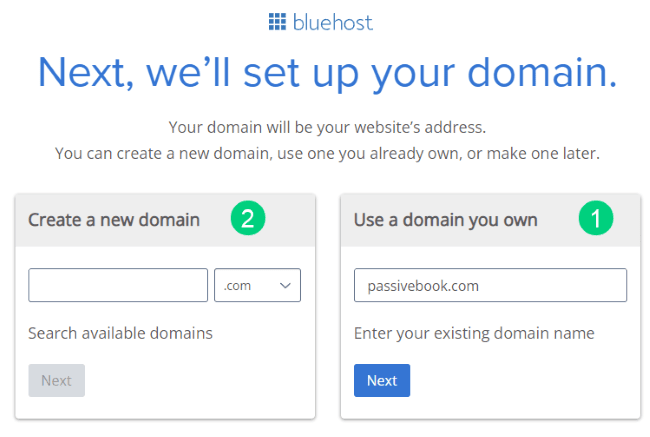
5. In the next screen, enter your information. Uncheck all package extras. If you purchase your domain through Bluehost instead of Namecheap, you may want to enable Domain Privacy. You won’t see the Domain Privacy option if you bought your domain through Namecheap. Namecheap will give you this Domain Privacy for free.
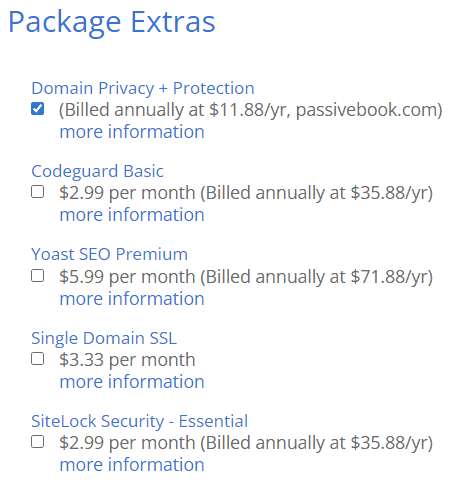
6. Once you have successfully paid, you will be prompted to set a password. Click on the “Create your Password” button.
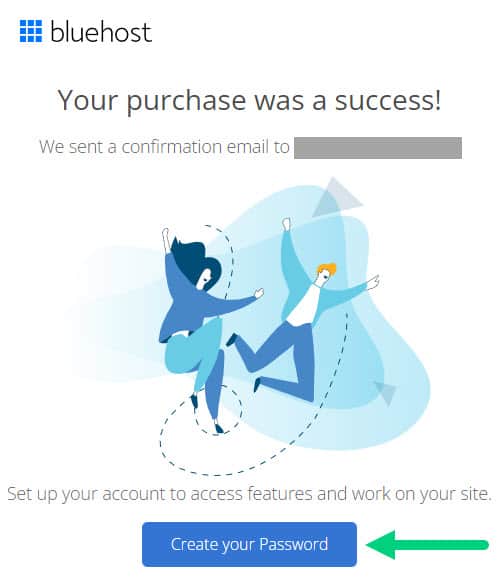
7. Enter your password and create your account. If you lose this password, you can reset it.
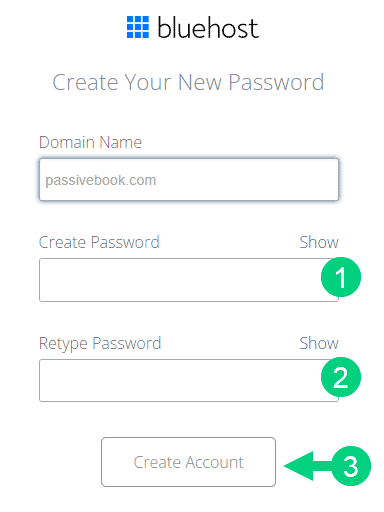
8. After you set your password, log in to Bluehost.
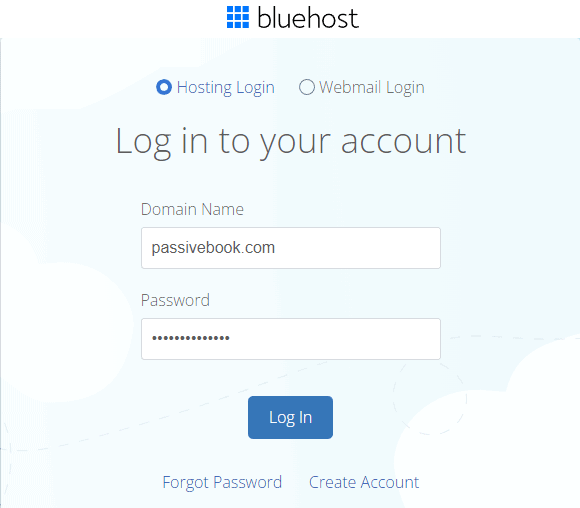
9. Click on the Create your website button on the following screen. This will start a Bluehost Wizard, just click Skip this step wherever possible.

10. On the following page, click “No help needed” or “Skip this step”. We don’t want Bluehost to limit our customization options.
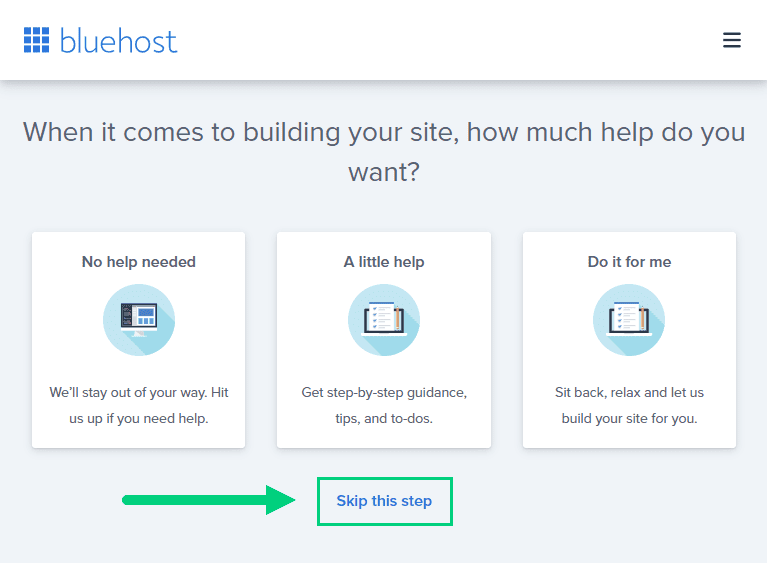
11. On the next page, you will be asked about the purpose of your website. You can choose from any of the available options.
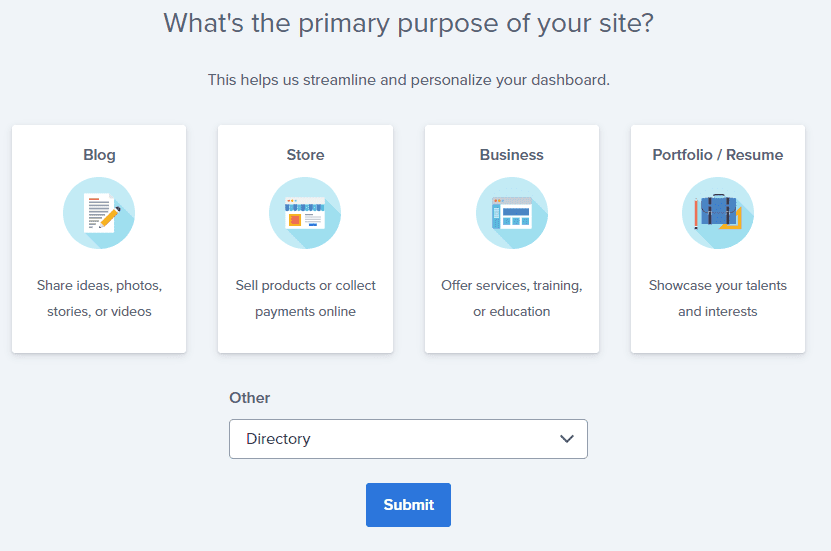
12. On the next page, click Skip this step.
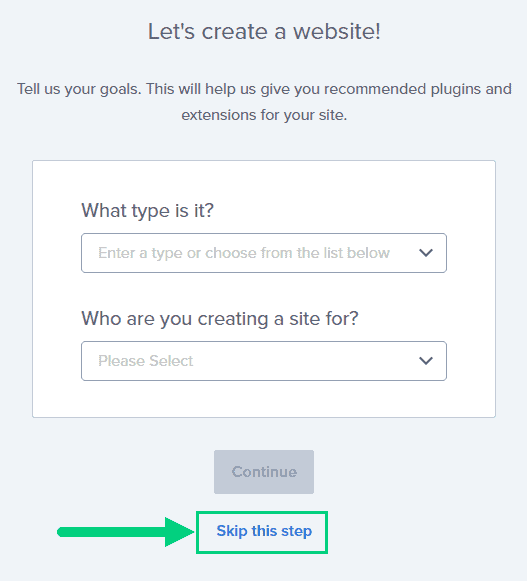
13. On the following page, enter the blog’s name and tagline. You can change this later so feel free to click “Skip this step” or enter something as a placeholder and click Continue.
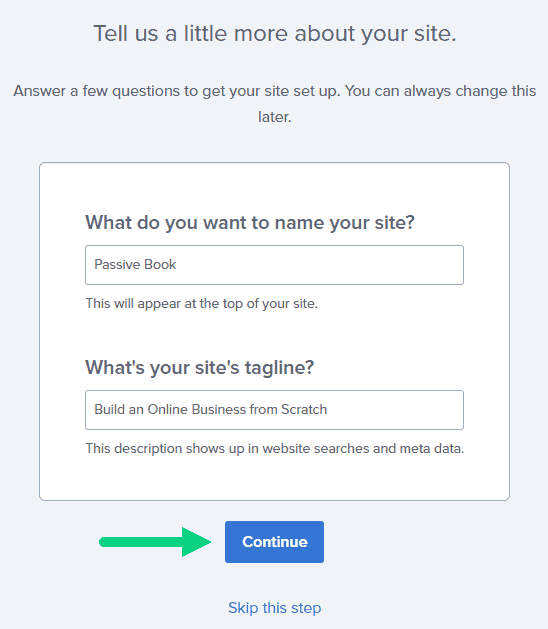
14. Finally you will be asked how you want to build your website. Choose “Limitless customization” to have all the options.

15. You can see your blog by going to yourdomain.com. Go to the Bluehost dashboard and click on the My Sites tab ❶ in the left sidebar and click on the “Manage site” button ❷.
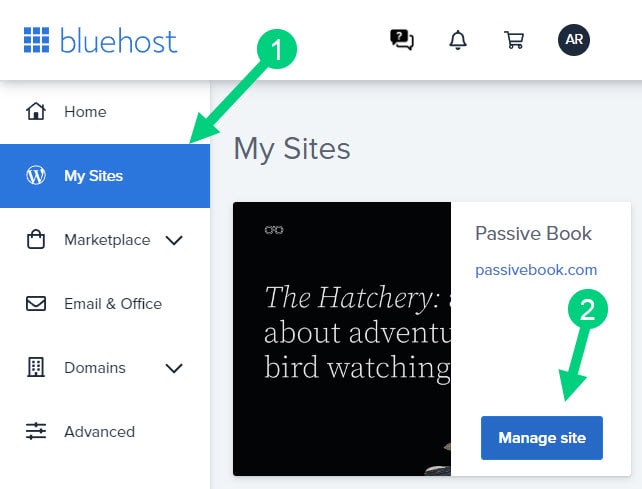
16. Your WordPress site has separate login credentials different from the ones you use to log into Bluehost. You can use this to log in to the WordPress dashboard directly without logging into Bluehost. To get this:
❶ Click on Users on top.
❷ You will be able to see your username and email that you can use to log in to WordPress.
❸ If you click on the three dots you will see the option to Reset your password. ❹
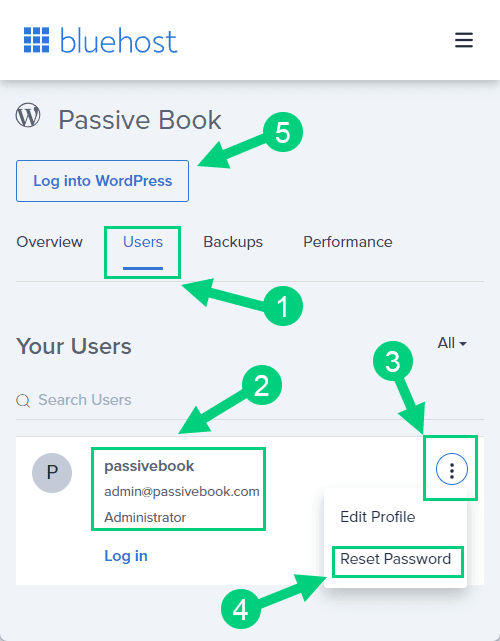
You can log into WordPress from the Bluehost dashboard by clicking the Log in to WordPress button ❺. But it is not recommended you rely on this as your primary login method because you will get locked out of your site if you ever change hosting providers.
17. You will be taken to the WordPress dashboard where you can reset your password ❶. If you don’t like the username Bluehost created for you, you can Add a New User ❷.

18. If you are adding a new user make sure you specify the user role as Administrator ❶. You can log in as the new user and safely delete the default user created by Bluehost.
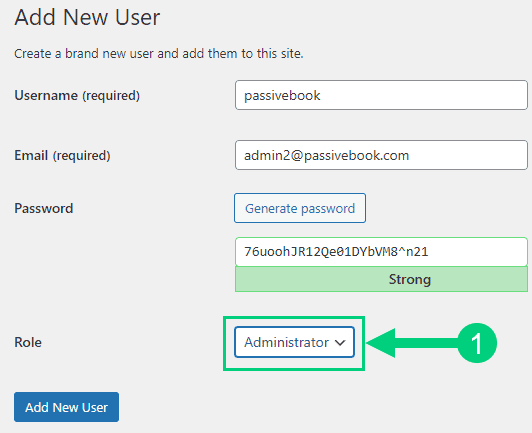
Congratulations! You have successfully set up WordPress.
Configure WordPress
Now that you have the basic version of WordPress installed, it is time to customize it to make it look and feel the way you want.
Login to WordPress Dashboard
Visit yourdomain.com/wp-admin to access the WordPress dashboard.
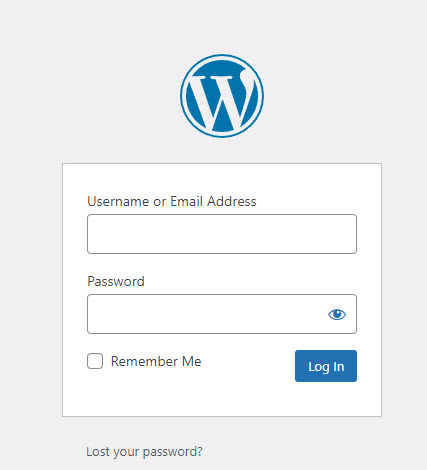
The WordPress Dashboard is the control center for your WordPress blog. It contains all the tools and options you need to manage your blog.
Use the Email and Password you provided during installation to log in to your WordPress dashboard. If you don’t have a password, use the “Lost your password?” to generate a new password.
Install WP Themes
A WordPress Theme is a collection of files that determine the look and feel of your WordPress blog. When you install a WordPress Theme, it will change the entire design of your blog.
Your new WordPress blog will be installed with a default blog theme that doesn’t look very great.
To install a new WordPress Theme:
Go to Appearance > Themes > Add New in your WordPress dashboard.
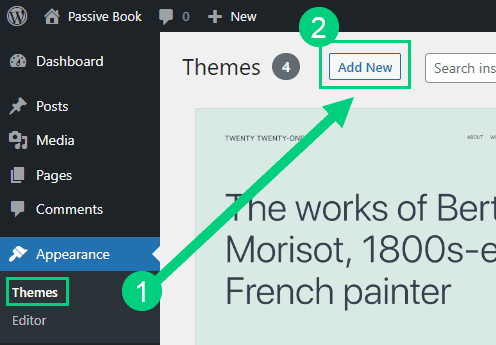
Use the search to find a theme that you like ❶. Before you install the theme, you can see a demo of the theme and learn about its features from the preview screen ❷. If you like the theme, you can install it by clicking the install button ❸. You can also upload a theme from a file on your computer ❹.
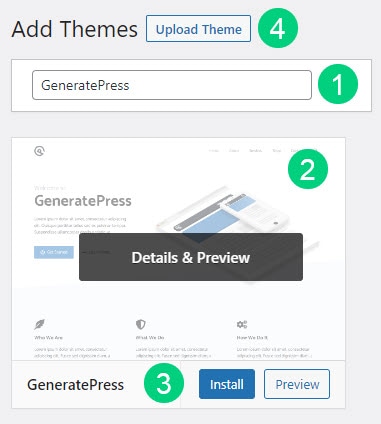
Once installed, click the Activate button to enable the theme.
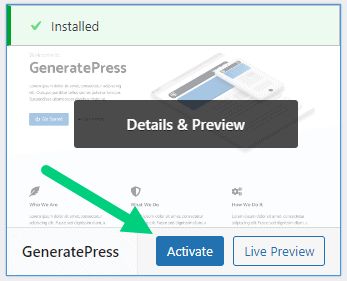
Although you can use a free theme (there are thousands of free themes available), we recommend using a premium theme.
Premium themes not only reduce your website’s load time but also help you customize your website to your heart’s desire.
Here are the premium themes we recommend:
There are also several custom-made personal finance blog themes. These themes tend to be bloated with poor code which will slow down the performance of your website. We suggest getting one of our recommended themes for a fast website with unlimited customization possibilities.
Install WP Plugins
A WordPress Plugin is a software that adds new features to your WordPress blog. There are thousands of WordPress Plugins available for free in the WordPress Plugin Directory.
Plugins can help you add features like social media integration, contact forms, photo galleries, and more to your WordPress blog.
Too many wordpress plugins can slow down your blog site. So before you install new plugins, it will be worth clearing out any existing plugins that your hosting provider installed by default.
Plugins first need to be deactivated before they can be deleted.
❶ Go to WP Admin > Plugins > Installed Plugins
❷ Click on the checkbox to select all plugins.
❸ Select Deactivate from the drop-down.
❹ Click Apply.
❺ Repeat the above steps but select “Delete” instead of “Deactivate” from the dropdown in ❸ to delete all the deactivated plugins.
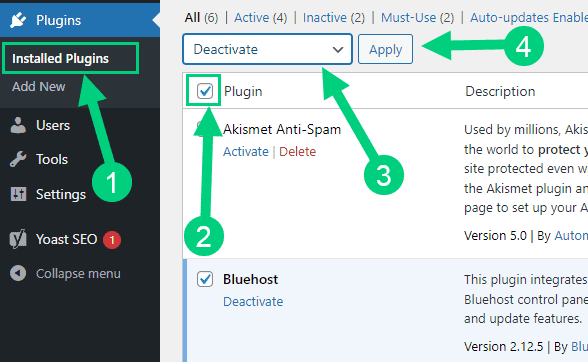
To install new plugins go to the WP Admin > Plugins > Add New.
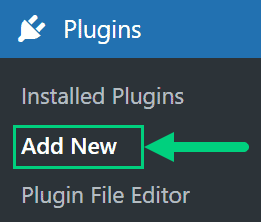
On the plugins page:
❶ Search for the plugin you want in the search bar
❷ Click Install Now. Once you install the plugin, you must also activate the plugin for it to be enabled.
❸ If you are installing a paid plugin you can upload the plugin instead.
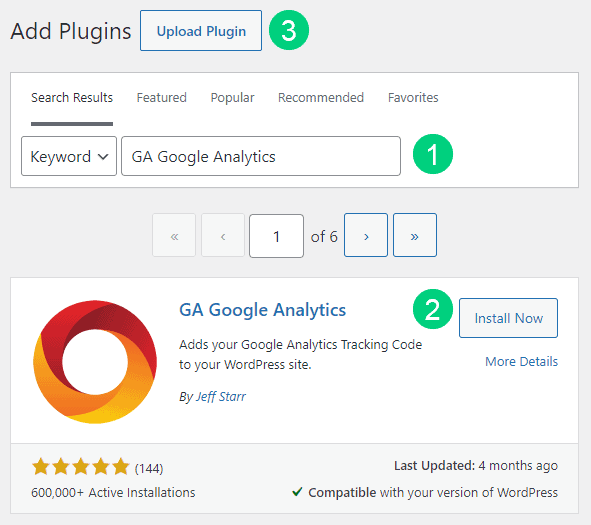
There are many different personal finance blog plugins that you can install, but here are the ones which we recommend:
Backup Plugin: A WordPress Backup Plugin is a plugin that helps you back up your website. A backup plugin will create a copy of your website’s files and database so that you can restore your website if something goes wrong.
Recommended Plugin: WPVivid (paid) or UpdraftPlus (free).
SEO Plugin: A WordPress SEO Plugin helps you improve your website’s search engine ranking.
Recommended Plugin: RankMath (paid).
Google Analytics Plugin: A WordPress Google Analytics Plugin helps you collect data on how people are using your website. This data can then be used to improve your website’s performance.
Recommended Plugin: RankMath (paid) or GA Google Analytics (free).
Cache Plugin: A WordPress Cache Plugin helps to improve the performance of your website by caching your website’s pages and posts. This means that the next time someone visits your website, they will not have to wait for the page to load, because the page has been cached on the server.
Recommended Plugin: WP Rocket (paid).
Page Builder Plugin: A WordPress Page Builder Plugin is a plugin that helps you create custom pages and posts for your website. With a page builder plugin, you can create custom pages and posts by adding and dragging, and dropping modules into place.
Recommended Plugin: Thrive Architect (paid).
Security Plugin: A WordPress Security Plugin helps to secure your website from hackers. There are many different security plugins available, but we recommend using a plugin that includes a firewall, malware scanning, and brute force protection.
Recommended Plugin: Wordfence (free).
Social Media Plugin: A WordPress Social Share Plugin helps you add social media sharing buttons to your website. This allows your website’s visitors to share your content on their social media profiles with a single click.
Recommended Plugin: Easy Social Share Buttons (paid).
Email List & Lead Generation Plugin: A WordPress Email Opt-in Form Plugin helps you collect the emails of your website’s visitors. This allows you to contact these visitors later with new content or offers.
Recommended Plugin: Thrive Leads (paid).
Customize WordPress
Once you have installed your theme and plugins, it is time to customize the wordpress blog platform:
Change Colors, Fonts & Spacing
You can set the font, colors, and spacing by going to Appearance > Customize in your WordPress dashboard. Premium themes like GeneratePress allow you to customize every aspect of your blog.

Check out our Blog Fonts & Typography guide to choose the right font and typography settings for your blog.
Add Your Logo
Get a logo designed for your blog from Fiverr. Then set the logo of your blog by going to Appearance > Customize in your WordPress dashboard. A logo is not required for a successful blog but it can definitely help appeal to your target audience.
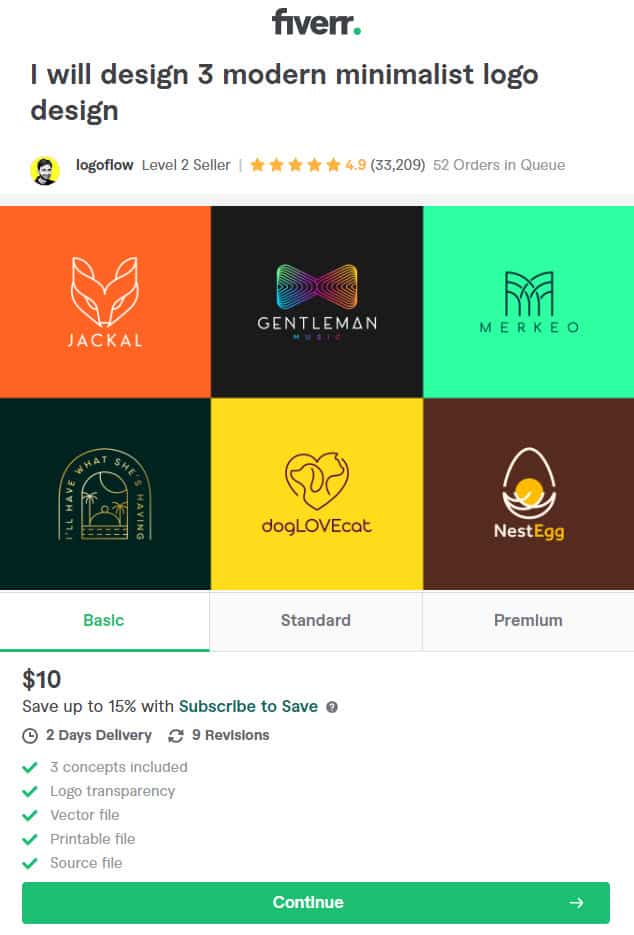
Change Favicon
Favicon is the image that appears in the browser tab and bookmarks. Set the Favicon from the Appearance > Customize section of the WordPress dashboard.

Create Menus
The header and the footer menu can be set from the Appearance > Menus in your WordPress blog dashboard.
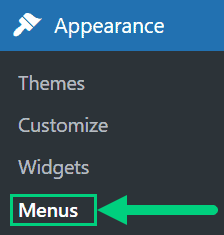
You can nest menu items so that it appears as a dropdown menu ❶. You can use the menu as your primary or secondary navigation menu ❷. Don’t forget to save your menu ❸.
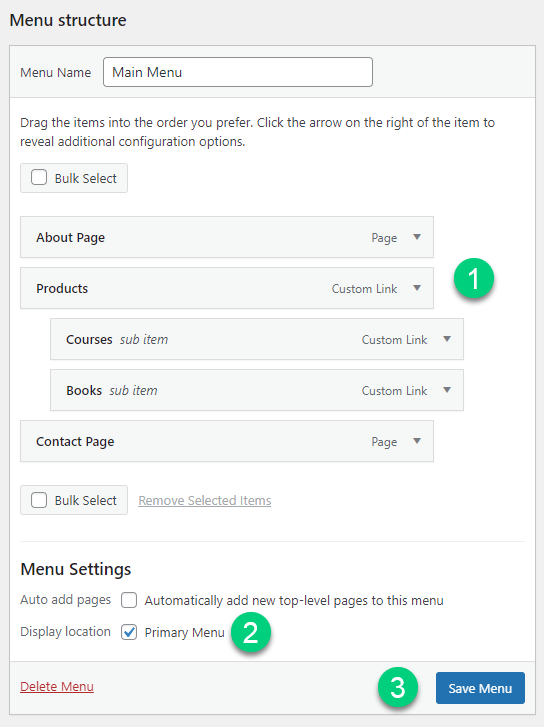
Create Widgets
If you have a sidebar, you can add widgets to it. Go to Appearance > Widgets in your WordPress admin dashboard.
Check out the list of the most useful Blog Widgets and how to add them to your blog.

Set Title & Tag Line
The next step is to change your General Settings. Go to Settings > General in the WordPress Admin area.
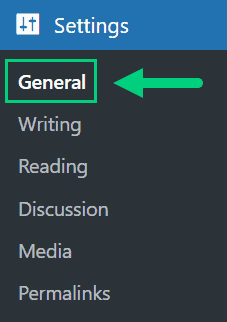
You can set your Site Title, Tagline, and Time Zone from this screen.
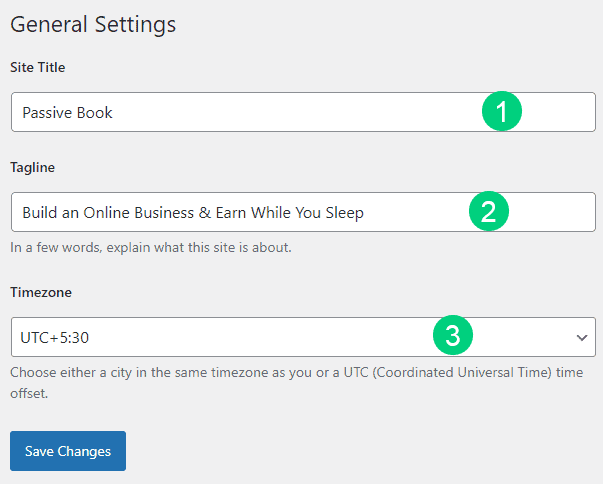
Set Permalinks
The ideal URL structure for SEO is yourdomain.com/sample-post. Set your permalink structure by going to Settings > Permalinks in your WordPress blog dashboard.

Select the “Post name” radio button and save changes.
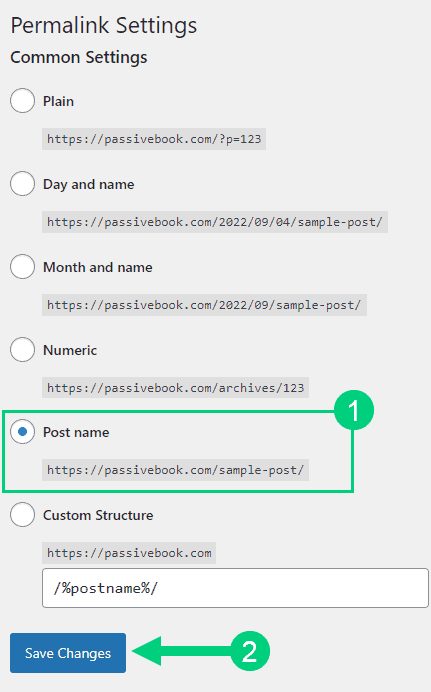
Enable Search Visibility
Chances are you want your blog to show up on Google so people can find you. Go to Settings > Reading in your WordPress dashboard.
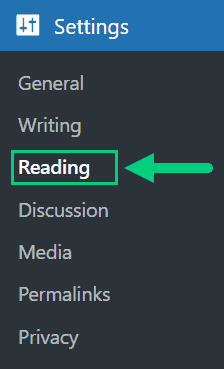
To get search engine traffic, ensure the checkbox “Disable search engines from indexing this site” is Unchecked. You can find this option in Settings > Reading. Most of the time this should be unchecked by default but if it is not, then uncheck it to ensure your site gets traffic from search engines.
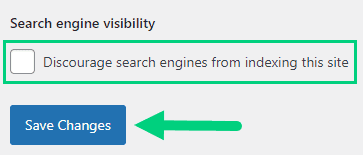
Adjust Comment Settings
Next, you will want to change the Discussion Setting (aka Comments). Go to Settings > Discussion in your WordPress admin area.
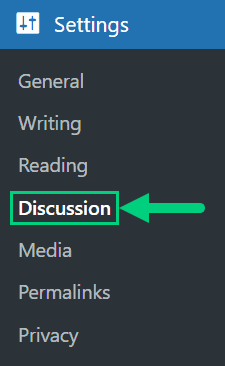
❶ You may want to enable or disable comments on this page. You can also disable pingbacks and enable comment moderation.
❷ You can also set comment approval settings.
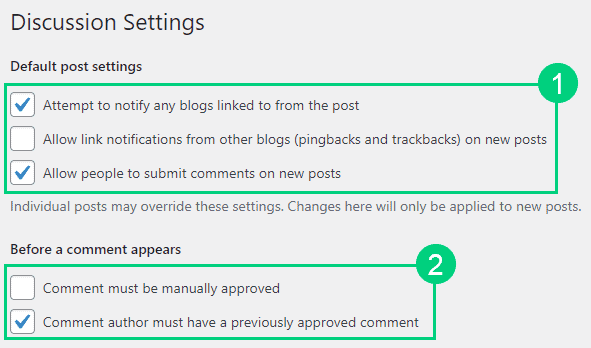
If you want to design your blog further, check out our dedicated guide on blog design which has all our best blog design recommendations.
Create Static Pages
There are a few essential pages that you need to create for your personal finance blog before you can start blogging.
Use pages in WordPress to add static content. Go to WP Dashboard > Pages > Add New.
- Write the headline of your content.
- Populate the body content
- Click the publish button.
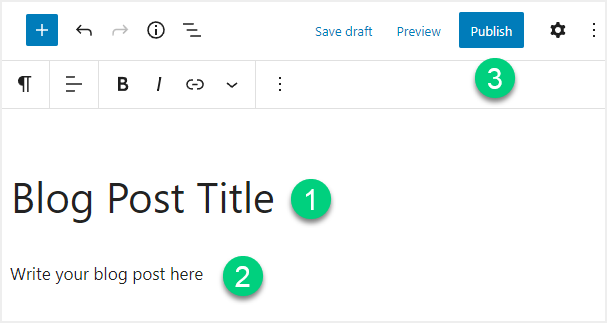
You may want to create the following pages:
Home Page
A home page is the main page of your website. It is usually the first page that your website’s visitors see. The home page usually contains a summary of your website’s content, and it can also contain a list of your latest blog posts.
You can create a professional home page for your personal finance blog using a page builder like Thrive Architect.
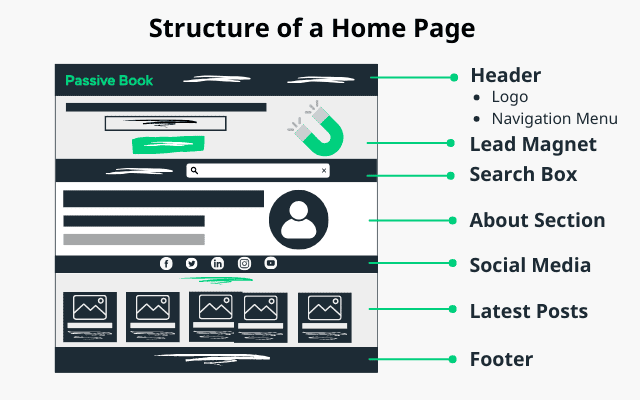
About Page
An about page is a page where you tell your website’s visitors who you are, and what your website is about. The About page is usually one of the most popular pages on a website.
An about page should include information about the author, such as their name and background. It should also include a brief summary of the author’s experience or qualifications in personal finance. The About page should also describe the purpose of the blog, and what type of content the blog publishes.
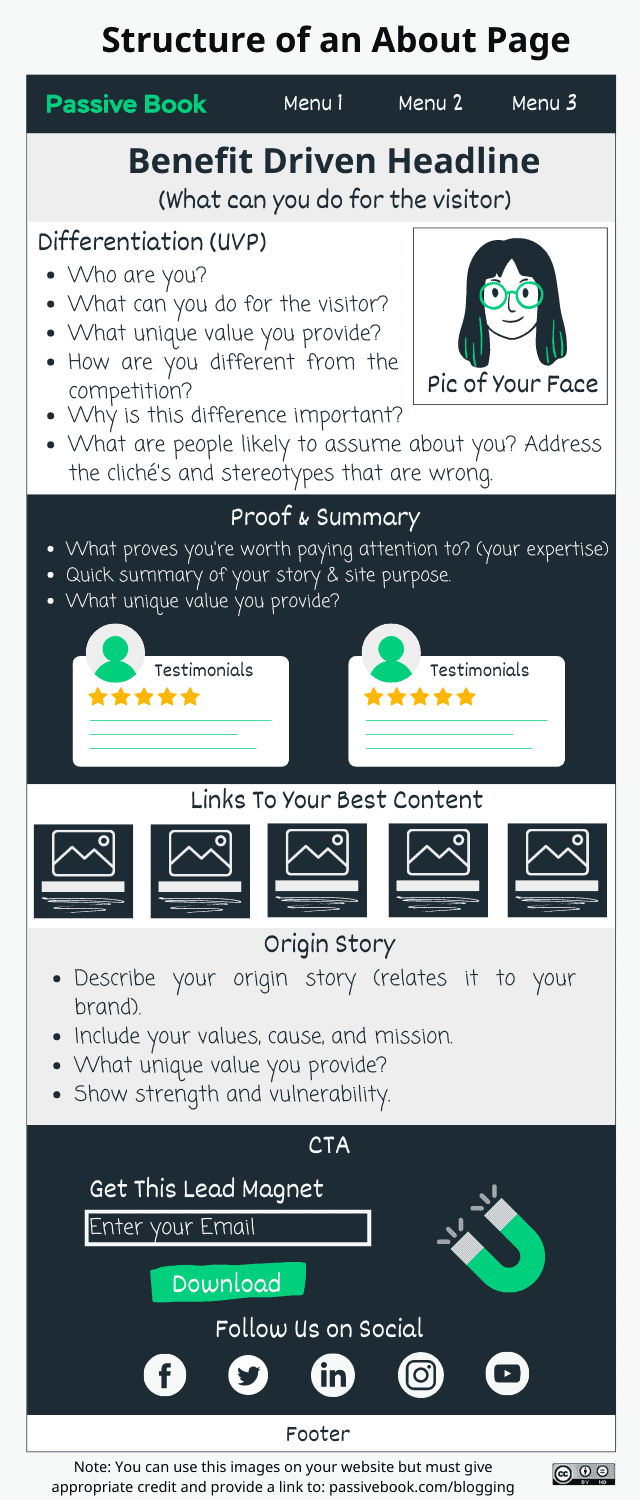
Contact Page
A contact page is a page where you provide your website’s visitors with a way to get in touch with you. The contact page should include your email address, social media profiles, and any other methods of contact that you want to provide.
Use contact form plugins like Fluent Forms to create the form on your contact page.
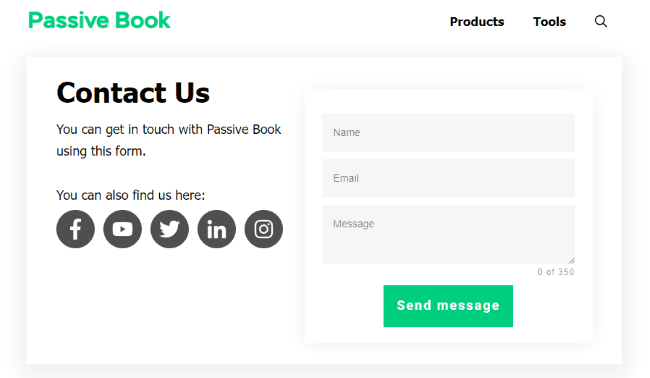
Privacy Policy
A privacy policy page is a page where you tell your website’s visitors how you collect, use, and store their personal information. The privacy policy should be written in clear and concise language, and it should be easy for your website’s visitors to find.
WordPress generates its own privacy policy for you. But you can also use a tool like Termly to generate your own privacy policy.
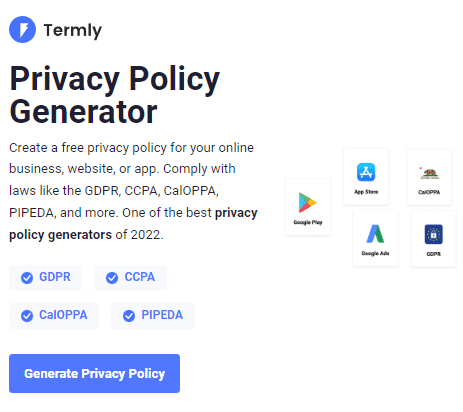
Terms of Service
A terms of service page is a page where you tell your website’s visitors the rules that they must follow when using your website. The terms of service should be written in clear and concise language, and it should be easy for your website’s visitors to find.
Use a terms & conditions generator like Termly to create it.
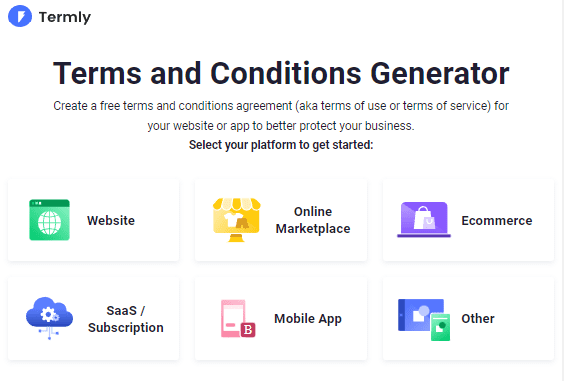
5. Write & Publish Blog Posts
Now that you have your personal finance blog set up, it’s time to write and publish your first blog post. To craft the perfect blog post, check out our in-depth guide on How to Write A Blog Post. Here we will go over specific tips for a personal finance blog.
1. Brainstorm Topics
You should brainstorm 100 topic ideas for your personal finance blog. This will ensure that you always have content to write about in your personal finance blog.
The goal is to find topics for your personal finance blog that your audience is searching for in Google. The type of content you write on your personal finance blog will depend on your specific niche.
Here are a few personal finance blog post ideas, you can potentially cover:
- Tips
- Reviews
- How to Guide
- List Posts
There are a few ways to brainstorm specific content:
Look at Competitors
Looking at what your competitors are doing can help you get ideas for how to structure your own articles. It also lets you know what content is popular in the industry and how to create it. If you’re just starting out, then this is where most of your inspiration will come from.
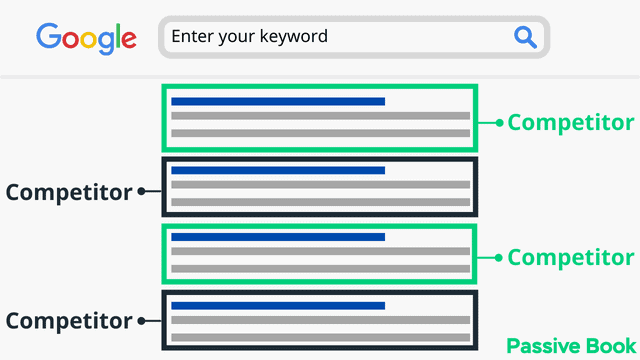
Do Keyword Research
If you want to brainstorm additional keywords for your personal finance blog, you can use a tool like KeywordTool.io. This tool allows you to enter a keyword, and it will provide you with a list of related keywords that you can write blog posts about.
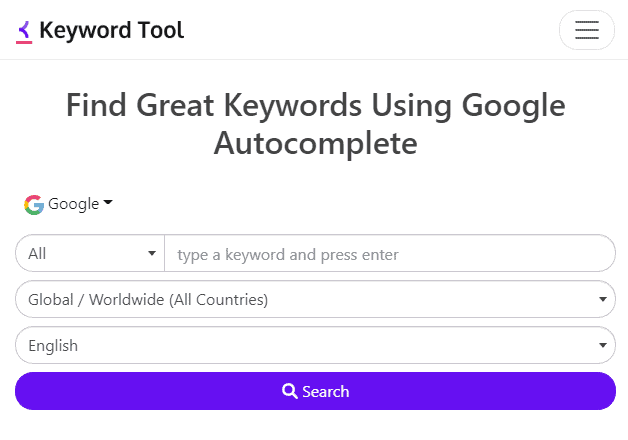
Community & Forums
One way to find blog post topics is to look at online communities and forums. These communities are usually filled with people who are passionate about a specific topic, and they are always looking for new content to read.
You can find online communities and forums by doing a Google search for “[topic] community” or “forum for [BLANK]”.
You can also use Facebook Groups, Reddit, and Quora to achieve the same result.
2. Create an Editorial Calendar
An editorial calendar is a tool that helps you plan and organize your blog posts. The editorial calendar should include the title, topic, due date, and any other relevant information for each blog post that you plan to write.
The benefits of using an editorial calendar are:
- You can plan and organize your blog posts in advance. This ensures that you always have content to publish in your personal finance blog.
- An editorial calendar helps you keep track of your deadlines. This prevents you from missing a deadline and publishing a blog post late.
- An editorial calendar ensures that you publish a consistent stream of content in your personal finance blog. This helps you attract and retain readers in your personal finance blog.
Download Content Calendar Template

Steal our exclusive content calendar template. Have it delivered directly to your inbox:
You can use a spreadsheet like Google Sheets or Microsoft Excel to create your editorial calendar. Or use a tool like Trello or Notion to make one.
3. Write a Blog Post
Now that you have a topic for your first blog post, it’s time to start writing.
Write 5x Faster with AI
You can write your new blog post at 5x speed using the AI writing software Jasper. I was able to write over a hundred blog articles in 3 months using Jasper. This blog article you are reading right now was written with the help of Jasper. AI will not only help you write blog posts fast but also with higher quality.
Jasper can write plagiarism-free blog content, articles, social media content, emails, and ad copy. All you have to do is provide a few inputs on what you want and Jasper will do all the hard work of creating the blog content for you. No more writer’s block.
Check out the video below to see Jasper in action:
Try Jasper for free using the links on this page and get 10,000 bonus credits you can use to start writing your first articles.
Once you sign up for Jasper I recommend you spend some time going through the tutorial videos in the Jasper Bootcamp to truly unlock the power of this amazing software.
Check out our guide on How to Write a Blog Post Fast in 15 mins Without Losing Quality for more tips to write fast.
Personal Finance Tips
One of the most popular types of content in personal finance blogs are tips. For example, personal finance blogs write budgeting tips, investing tips, and credit card hacks.
To write a tips post, all you need to do is compile a list of tips on the topic that you’re writing about.
For example, if you’re writing a post on investing tips, you can compile a list of 10 investing tips.
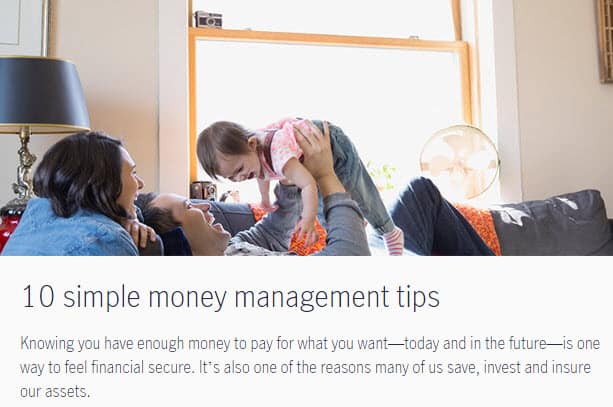
Each tip should be short and to the point. You can then elaborate on each tip in 1-2 sentences.
If you want to take your tips post to the next level, you can include additional resources like links, images, and videos to supplement your content.
How-To Guide
Another popular type of content in personal finance blogs are how-to guides.
A how-to guide is a blog post that walks the reader through a specific process. For example, how to start investing, how to get out of debt, how to save money on groceries, or how to achieve financial freedom.

To write a how-to guide, simply list out the steps that the reader needs to take to complete the task.
It’s important to be as detailed as possible in your how-to guide. You should also include additional resources like links, images, and videos to supplement your content.
List Post
A list post is a blog post that contains a list of items. For example, the 10 best personal finance books or the 5 worst credit cards.
To write a list post, simply compile a list of items on the topic that you’re writing about.

Have the most interesting or unusual element from your list as the top items and keep the more obvious ones to the end.
For each item on your list, you should include a short description. You can also include additional resources like links, images, and videos to supplement your content.
Outsource Writing
If you don’t have the time or energy to write blog posts, you can always outsource the content creation process.
There are several ways to find writers for your personal finance blog.
You can use a freelancer platform like Fiverr or Upwork to find writers.

You can also use a content writing service like Copify or iWriter.
Or you can contact the author of another blog in your niche and ask if they’re interested in guest posting on your blog.
4. Add Images
Images are a great way to break up your text and make your blog post more visually appealing.
When selecting images for your blog post, it’s important to choose high-quality images that are relevant to the topic of your blog post.
However, it can be difficult to find high-quality images that are free to use. One solution is to take your own photos. This gives you complete control over the quality and the subject of the image.
If you don’t have the time or energy to take your own photos, you can always purchase stock photos.
There are several websites where you can purchase high-quality stock photos, such as:
Free Options: Pixabay, Pexels, Upsplash
Paid Options: Deposit Photos, Shutterstock, iStock, Getty Images, 123rf.
There are also many online tools that you can use to create high-quality images for your blog post. One of the most popular tools is Canva. It is a free online tool that allows you to create professional-grade graphics. It’s easy to use, and there are a variety of templates and designs to choose from.

If you’re looking for high-quality images to use in your blog post, I recommend upgrading to Canva Pro. The free version of Canva only gives you access to a limited number of stock images. However, the Pro version gives you access to a library of high-quality stock images that you can use for free.
6. Promote Your Personal Finance Blog
Once you’ve written your blog post, it’s time to start promoting it.
Here are the best ways to get blog traffic as a personal finance blogger:
Search Engine Optimization (SEO)
SEO stands for “Search Engine Optimization”. It is a process that can be used to improve the visibility of your personal finance blog in search engine results pages (SERPs).
There are several techniques that you can use to improve your SEO.
One of the most important steps is to include keywords in your blog post.
Keywords are the words and phrases that people use when they search for information on the internet.
For example, if someone is looking for “how to start a personal finance blog”, they will use those exact words as their keyword when searching in Google.
Including keywords in your blog post will help search engines understand what your blog post is about, and it will help you rank higher in search engine results pages.
Many factors go into SEO, and it can be a bit confusing to figure out where to start. You can master the more advanced SEO tactics by checking out our SEO Resources.
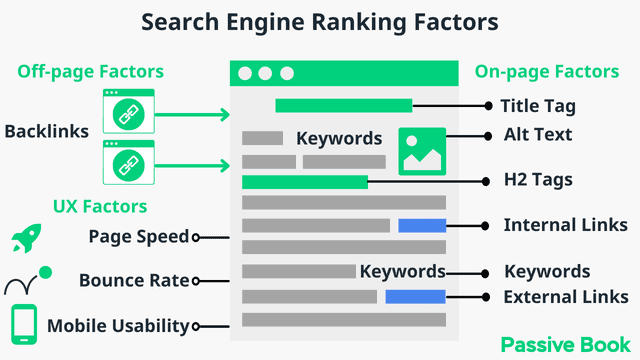
You can ensure you get the basics of SEO right, by completing the recommendations given by the RankMath plugin.
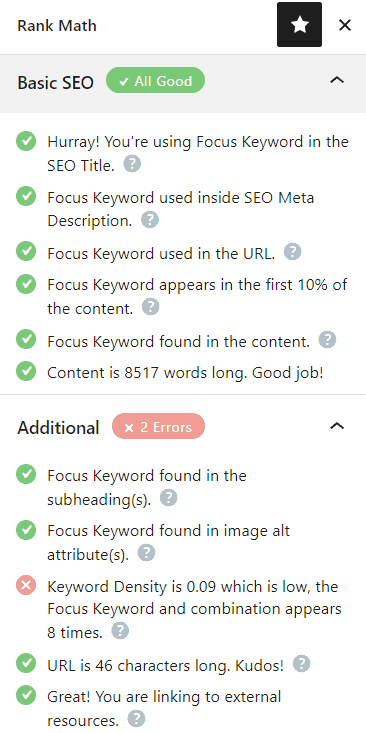
Email Marketing
Email marketing is a process that involves sending emails to potential and current customers.
It can be an effective way to promote your personal finance blog because it allows you to reach a large number of people with very little effort.
Before you can do email marketing, you must first build a list of email subscribers. To do that you should create opt-in forms to collect email addresses from your blog visitors. Then you should connect your opt-in form to an email marketing service to manage your subscribers and send emails.

You can use the Thrive Leads plugin to build opt-in forms to collect email addresses. You can then connect the opt-in form to an email marketing service like Active Campaign to send out the emails.
Check out our Email Marketing resources to learn more.
Social Media Marketing
Social media marketing is the process of promoting your blog post on social media platforms.
It can be an effective way to reach a large number of people with very little effort.
The most popular social media platforms are Facebook, Twitter, LinkedIn and Instagram.
When you promote your blog post on social media, it’s important to include a link to your blog post. That way, people can click on the link and be taken directly to your blog post.
It’s also important to use hashtags. Hashtags are words or phrases that are preceded by the “#” symbol. They are used to categorize content on social media platforms. For example, if you’re promoting a blog post about personal finance, you could use the hashtag #personalfinance.
Guest blogging
Guest blogging is the process of writing a blog post for another person’s blog.
It can be an effective way to promote your personal finance blog because it allows you to reach a new audience.
When you guest blog, you should include a link to your personal finance blog in your author bio. That way, people who read your guest blog post can click on the link and be taken directly to your blog.
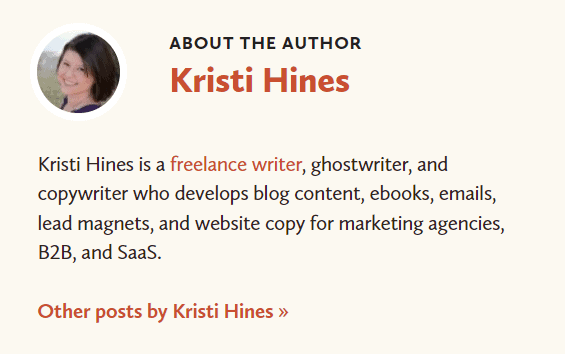
To find guest blogging opportunities, you can search Google for “guest blog” + your niche. For example, if you’re in the personal finance niche, you could search for “guest blog personal finance”.
7. Monetize & Make Money
Monetization is the process of earning money from your personal finance blog.
There are many ways that you can monetize your blog, and we will cover the most popular ones.
Advertising
One way to monetize your personal finance blog is to advertise.
You will get paid for every person who views your ad. So the more traffic you have, the more money you can make.
To advertise, you need to sign up for an ad network. Once you’re approved, they will provide you with code to insert into your blog. Then they will serve the ads on your blog and pay you based on how many people view the ads.
To start advertising on your blog, you can sign up for an ad network like Ezoic (they pay more than Google Adsense). When your blog starts getting more than 100,000 page views a month you can monetize with Adthrive.
| Ad Network | Earnings Per 1K Impressions (EPM) | Monthly Traffic Requirement |
|---|---|---|
| Ad Thrive | $13 | 100,000 |
| Ezoic | $3 | 10,000 |
| Media.net | $1 | – |
| Google Adsense | $1 | – |
Affiliate Marketing
Affiliate marketing is the process of promoting products and earning commissions for every sale that you make.
It’s a popular way to monetize personal finance blogs because it allows you to earn money without having to create your products.
To get started with affiliate marketing, you need to sign up for an affiliate program. Once you’re approved, you will be provided with a special link to promote their products. When someone clicks on your link and buys the product, you will earn a commission.
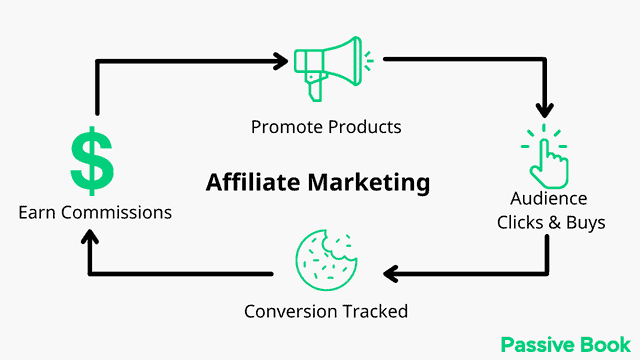
Digital Products
Another way to monetize your personal finance blog is to sell digital products.
Digital products are information products that are delivered electronically. They can be in the form of eBooks, online courses, or audio files.
The advantage of selling digital products is that you can earn a lot of money for each sale. For example, if you sell an eBook for $10, you will keep the entire $10.
To get started with selling digital products, you need to create the product and then set up a sales page on your blog. Once people buy your product, they will be able to download it immediately.
You can use Teachable if you want to sell video courses. Your students will have a dedicated course members area and a community system to ask questions and interact with each other. If you only want to sell eBooks, you can use SendOwl which lets you sell your digital products and eBooks for free.
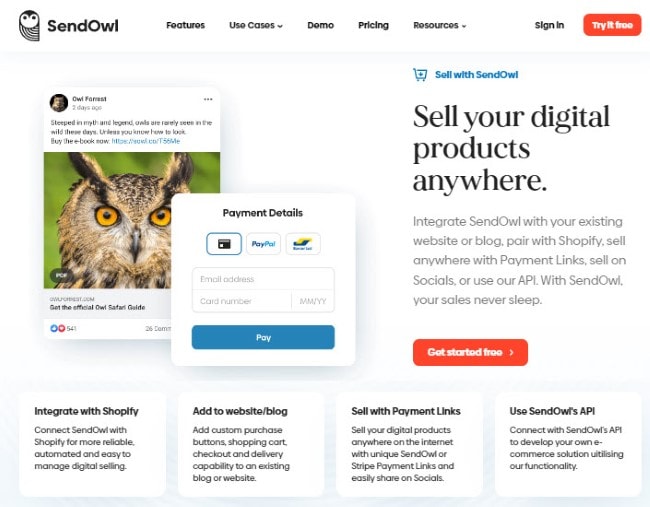
Sell Services
Another way to monetize your personal finance blog is to sell services.
If you’re a financial planner, you could sell your financial planning services on your blog. If you’re a freelance writer, you could sell your writing services.
You can use your blog to promote the services that you offer to clients.
FAQ
Can personal finance blogs make money?
Personal finance blogs can make money through several different monetization methods, including advertising, affiliate marketing, and selling digital products.
Can I start a personal finance blog for free?
Yes, you can start a personal finance blog for free using a free platform like Blogger. However, it’s not recommended as it will be hard (if not impossible) to grow your blog and make money. We recommend you follow this guide and set up your blog in self-hosted WordPress.
How long does it take to make money from a personal finance blog?
It usually takes 6-12 months to start making money from a blog. But this varies depending on the niche, monetization methods, and amount of effort you put into growing your blog.
How much traffic do you need to make money blogging?
It depends on the monetization method. For example, if you’re selling advertising space, you will need more traffic to make more money. If you’re selling digital products, you can make money with less traffic.
Can I blog anonymously?
Yes, you can blog anonymously. However, we recommend using your real name as it will be easier to build trust with your audience.
What Next?
Starting a personal finance blog is a great way to share your thoughts and insights on money matters with the world. Not only can you help others learn about financial planning and investing, but you can also make money from your blog.
Done right there’s no doubt that starting a personal finance blog can be a lucrative business.
We hope this guide showed you how to start a personal finance blog. If you have any questions as you set up your new blog, leave a comment below so we can help you out.
Have you started your personal finance blog yet? What type of personal finance blog are you going to start? Let us know in the comments.
Share this post with your friends & followers:
